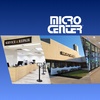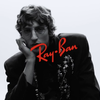DEVELOPING A STYLE
While working in Ghana, Bond designed the Bolgatanga Library, his first major project. The library was designed with an unusual open roof plan.
Some of his other projects include the Birmingham Civil Rights Museum and the Martin Luther King, Jr. Center for Nonviolent Social Change.
He also worked on the expansion of the Harvard Club of New York in midtown Manhattan and research facilities for Harvard Medical School (HMS).
For HMS, Bond’s firm, Davis Brody Bond, developed two buildings, including the Harvard Institute of Medicine. This required him to perform an unusual task: converting the 11-story Boston English High School into a research building for the University.
Bond was also charged with expanding the Harvard Club of New York just two years ago. The project generated controversy, as some club members said that the design was inconsistent with the feel of the older portion of the club, built in the mid-to-late 1890s.
Bond and his supporters successfully defended his design.
“We felt that the building should represent its culture,” Bond told The Crimson in 2003. “We tried to understand what it is that is relevant to today’s culture, to today’s issues. Buildings represent their era not only in terms of how they are built...but also in social mores of the time.”
Bond’s style has been described as eclectic, a description he finds amusing. He says that he considers his work to be a hybrid of several different styles.
“[American] culture is based on influences of people from all over the world,” Bond says. “I try to do designs that reflect that complex nature of our culture.”
Rather than simply take the historicist approach some of the members of the Harvard Club of New York favored, Bond considers the social and political contexts of the buildings he designs. In addition to aesthetic qualities, Bond examines the functionality of the building, and the culture of the people who will use and appreciate it.
“I would argue that’s a very modern attitude. I would say that it’s American in that sense. American in an inclusive sense, not an exclusive sense,” he says.
Bond designed the main reading room of Harlem’s Schomburg Center for Research in Black Culture in an octagonal shape, calling to mind the octagonal shape of the old churches that slaves built in the 18th and 19th centuries.
He used woods from Africa and local woods from the South in the paneling and furniture of the Martin Luther King, Jr. Center and the Schomburg Center.
He says that he often uses simple materials like brick and concrete in his work. One benefit of using such materials, Bond says, is that there is a greater chance of local black masons working on the construction, benefiting the local economy.
Read more in News
Despite Petition, Watson To Leave Ec 10












